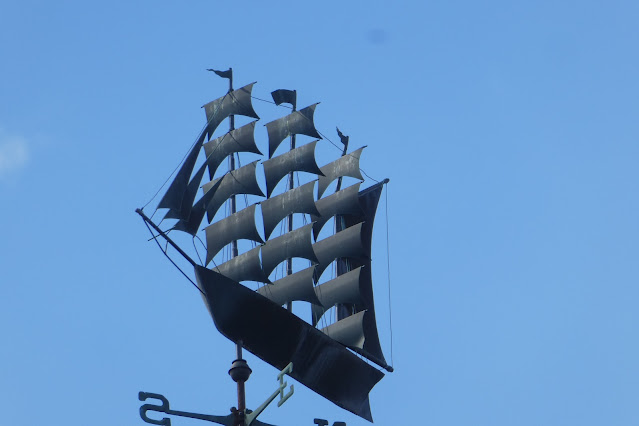 |
Webhannet Falls, Wells, Maine
Where Edmund Littlefield was granded land for a
grist and saw mill in 1643 |
Edmund Littlefield (1592 - 1662), my 10th great grandfather, is called "The Father of Wells, Maine". Edmund was baptized in Titchfield, Hampshire, England on 22 June 1592. He arrived in Boston in 1635 with his two sons, and his wife and six more children arrived in 1638 on board the ship Bevis. Edmund Littlefield was in New Hampshire to sign the Exeter Combination in 1639, and in 1643 he joined Rev. John Wheelwright on the coast of Maine, in what is now Wells, Maine.
This little wayside marker for Edmund Littlefield's mill is next to the Webhannet Falls on the side of Route 1, south of 876 Post Road. There is room to pull off the road and park to explore this site.
Edmund Littlefield was granted this land from Thomas Gorges, son of Sir Ferdinando Gorges on 14 July 1643. [NEHGS Register 105:262]. There appears to be a time discrepency between his land grant for the mill on the river, and the sign mounted on the boulder (see below).
RECOGNITION OF THOSE WHO MADE PARK POSSIBLE
Wells Town Officials Goodspeed Family
June & Roger Messier Gray Farms
Elizabeth & Bruce Parker Hayway Vales
Ester Miller Jo-Ann's Gardens
Cindy Brockway Nickersons 9B Ranch
Gail Lynde Garden Club
Wells Highway Dept. Wells Rotary
Historical Society
THE FIRST PERMANENT SETTLEMENT
OF WELLS WAS AT THIS SITE WHEN IN
1640/41 EDMUND LITTLEFIELD ERECTED
HIS SAW & GRIST MILLS
For the truly curious:
Wells [Images of America Series], by Hope M. Shelly, Arcadia Publishing, Dover, NH, 1996, page 7.
The Historical Society of Wells and Ogunquit, Maine - Littlefield Gallery webpage: https://www.wellsogunquithistory.org/littlefield
My blog post on Edmund Littlefield for Surname Saturday (showing my lineage): https://nutfieldgenealogy.blogspot.com/2019/01/surname-saturday-littlefield-of-wells.html
Tombstone Tuesday, Josiah Littlefield, buried in Wells, Maine: https://nutfieldgenealogy.blogspot.com/2022/07/josiah-littlefield-d-1713-wells-maine.html
-------------------------------------
To cite/link to this blog post: Heather Wilkinson Rojo, "Edmund Littlefield's Grist and Saw Mills, Wells, Maine", Nutfield Genealogy, posted December 15, 2022, ( https://nutfieldgenealogy.blogspot.com/2022/12/edmund-littlefields-grist-and-saw-mills.html



























